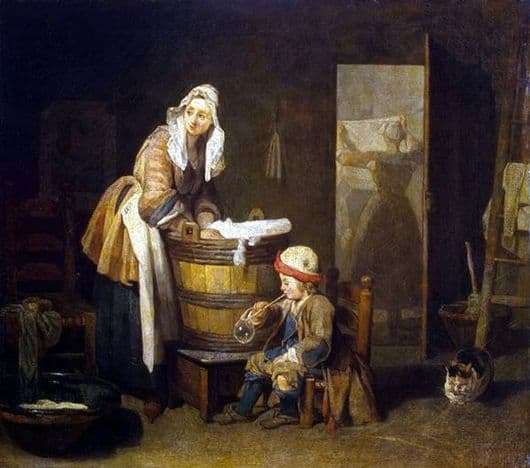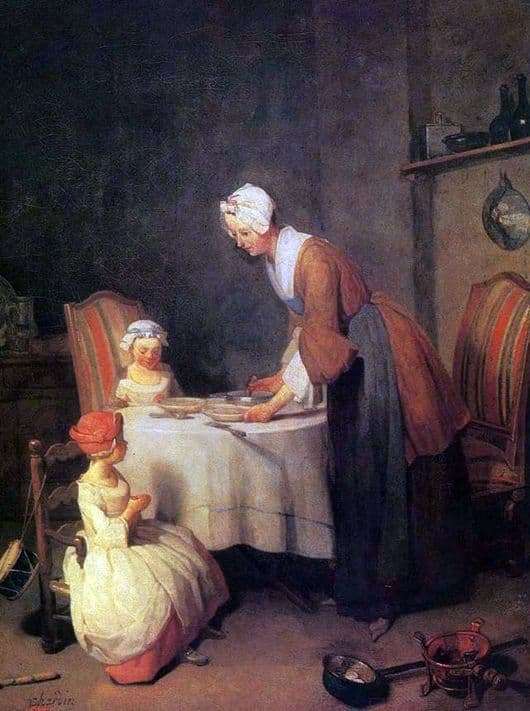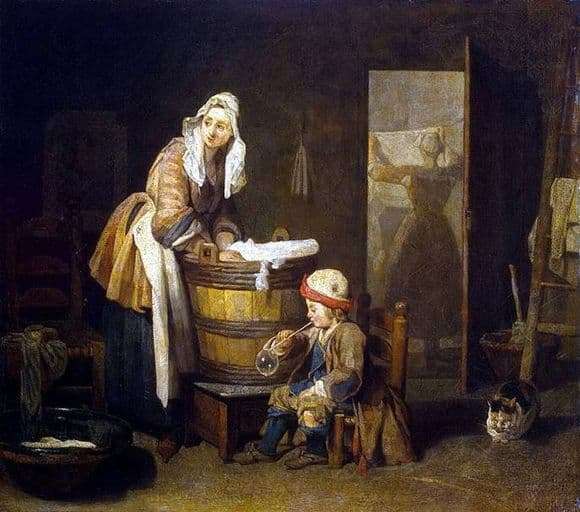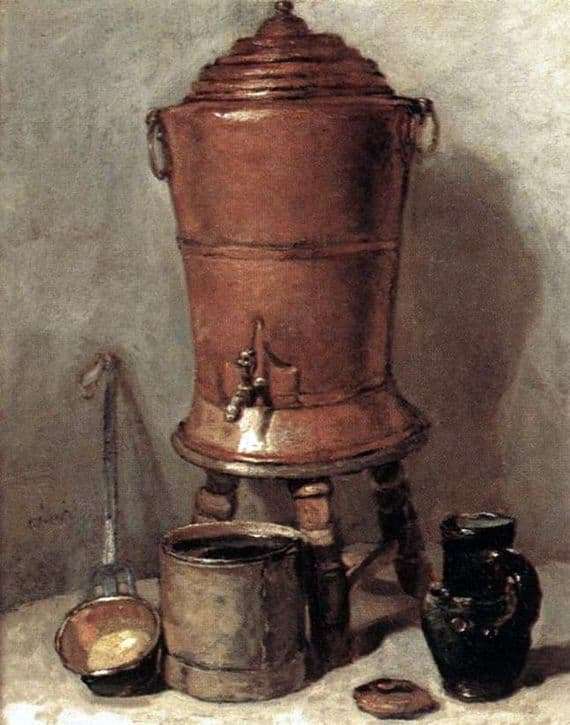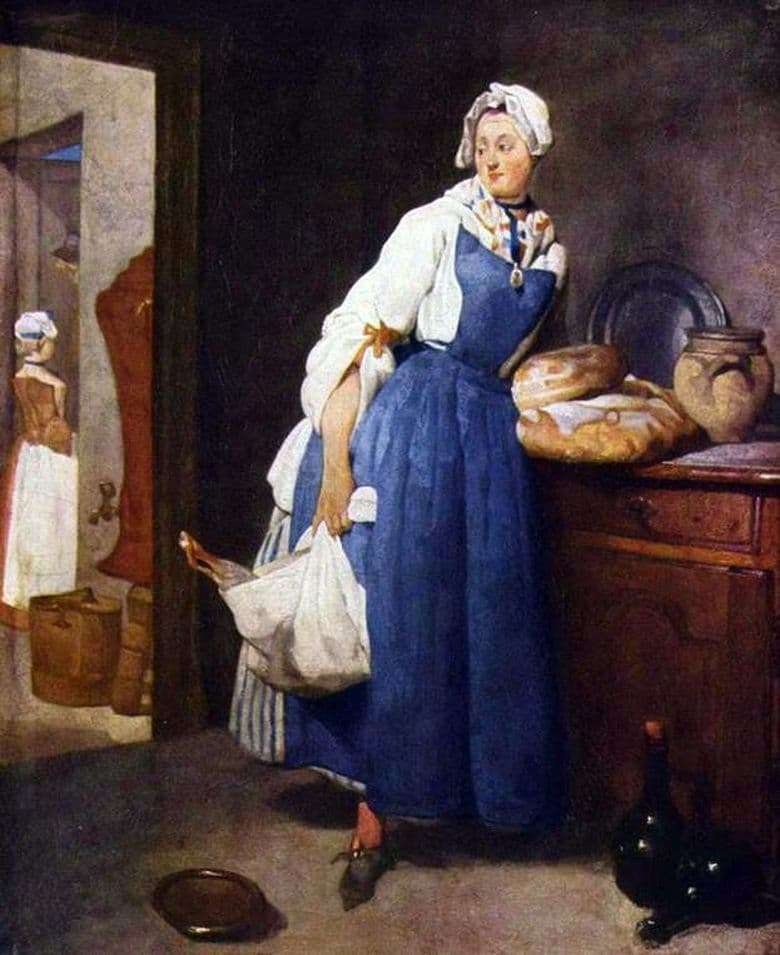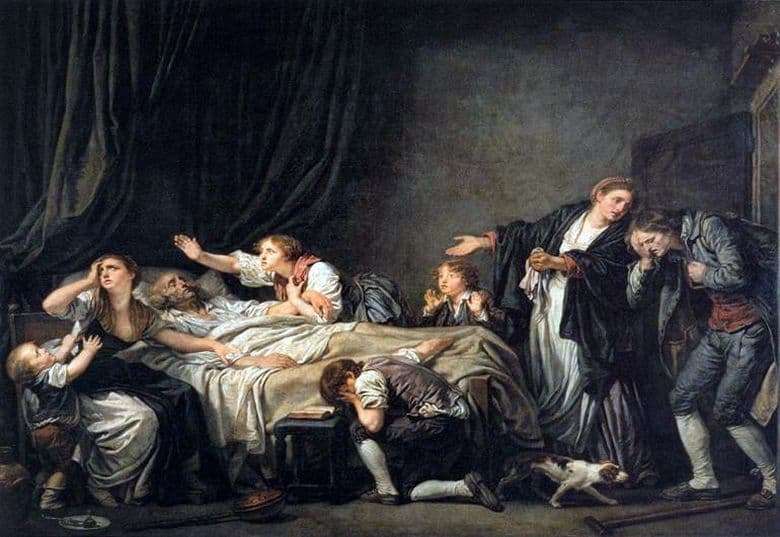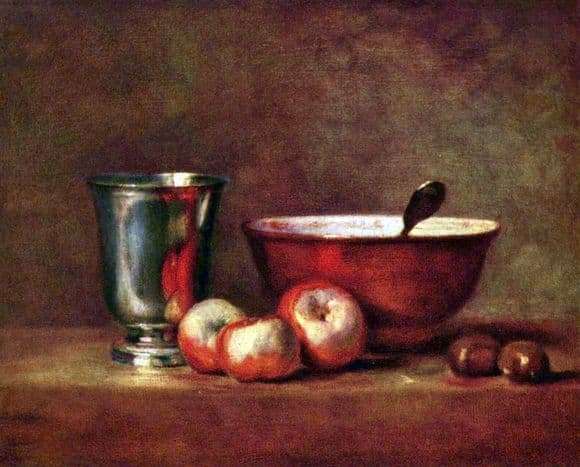
Chardin was a true master of still life. He preferred to depict completely familiar objects, utensils and dishes. His paintings are the most democratic and at the same time incredibly significant.
We see objects that become a symbol of a strong family life. They demonstrate her orderly way. Before us is a bowl with a spoon, a glass and three apples. This is a reminder of the meal of the most ordinary person. The artist treats all things very carefully. At the same time, it is absolutely unimportant what is in front of him: a simple bowl or an apple.
The artist seeks to arrange all objects as naturally as possible. All of them bear the stamp of the fact that somewhere there is a person. He does not just put things on the table, but picks them up in size. We do not have the impression that we have very large or too inconspicuous objects. The viewer can view each item in great detail. But at the same time the image is removed just enough to look as convincing as possible.
Still life is written incredibly volume. The artist skillfully uses the transitions of light and shadow. Shades are alive and sonorous. We do not feel any illusions. Before us is the most accurate image of these things. They are incredibly tangible and natural.
The artist worked on each of his still-life for a very long time. In early works, he sought to make the image as alive as possible. That is why he portrayed certain decorative elements, as well as added animals. He later decided to completely abandon it. Before us is just a set of items that are familiar to a person in everyday life. Cloth maximally calm and completely static. The art of the painter is contemplative and philosophically thought out. When looking at this still life, you can feel it.
Description of the painting by Jean Baptiste Simeon Chardin “Still Life”
